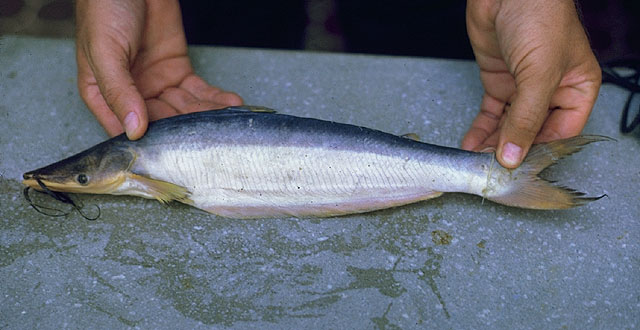| Pimelodidae (Long-whiskered catfishes) |
| 57.5 cm TL (male/unsexed); max.weight: 1,300.0 g |
|
pelagic; freshwater; depth range - 37 m, potamodromous |
| South America: Amazon and Orinoco River basins and Atlantic coastal rivers of Guyana and Suriname (Ref. 36506). Reported from Paraná River (Ref. 56308). |
|
|
| Pelagic species which lives in schools near the surface of the water (Ref. 35381). Found over soft muddy bottoms. Has no teeth in its jaws but possesses many long gill rakers that are used as a sieve for feeding on planktonic crustaceans like cladocerans, copepods and ostracods (Ref. 35381, 6868). Also feeds on debris, other plankton (Ref. 35381). Appears to follow the plankton's vertical movements during the day. Ovaries start to develop I November when the water level rises. Fractional spawning occurs between February and April. The female lays down 50,000 to 100,000 eggs according to its weight. Juveniles inhabit the lower part of streams in estuaries, adult are found more upstream (Ref. 35381). Marketed fresh and salted. |
|
Least Concern (LC); Date assessed: 16 December 2020 Ref. (130435)
|
| harmless |
Source and more info: www.fishbase.org. For personal, classroom, and other internal use only. Not for publication.
